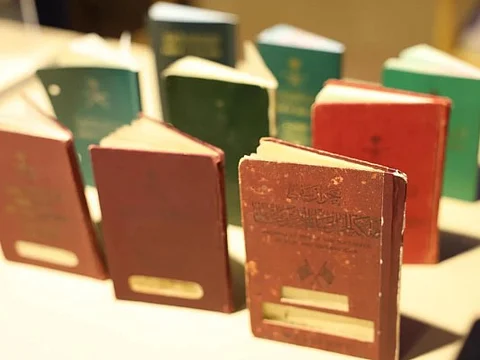

Every citizen around the world possesses an official identity that serves as a means of passage through the various transit points of a country, enabling travel between its airports and cities with ease, security, and safety, including the passport, which has evolved from ancient times to the modern era and into the future as a gateway to international ports and airports.
Throughout the history of the Kingdom of Saudi Arabia, the Saudi passport has served as a symbol of national identity for citizens traveling abroad. It has facilitated travel for various purposes, including education, medical treatment, work, tourism, and more. Over time, it has undergone significant historical developments and has garnered respect from world nations.
At the Ministry of Interior's "Security Oasis" exhibition at the 9th King Abdulaziz Camel Festival, the pavilion of the General Directorate of Passports features a section highlighting the evolution of Saudi passport documents throughout the years.
Since its inception, the Saudi passport has undergone several transformations in both name and design. Prior to the unification of the Kingdom during King Abdulaziz's reign, it was known as the “Passport of the Kingdom of Hejaz and the Sultanate of Najd and Its Dependencies” with handwritten information.
Following unification, the passport's design was modernized with the cover displaying "Kingdom of Saudi Arabia" in both Arabic and English, along with the word "Passport" and the national emblem of two crossed swords and a palm tree at the top. The color of the cover was also changed to green.
The General Directorate of Passports more recently introduced the electronic Saudi passport, equipped with global features reflecting the Kingdom's current prosperity.
The passport incorporates an electronic chip protecting the security of personal data and the passport holder’s photograph.
It also facilitates verification and automated processing at international ports through electronic gates.
The design of the electronic passport showcases Saudi identity by featuring images of renowned historical and cultural landmarks. This aligns with the digital transformation of Saudi passports, streamlining passport issuance and renewal processes.
Citizens can now utilize the Ministry of Interior’s Absher platform to electronically submit requests and have the passport delivered without the need to visit passport offices, thus saving time and effort and enhancing their quality of life.
